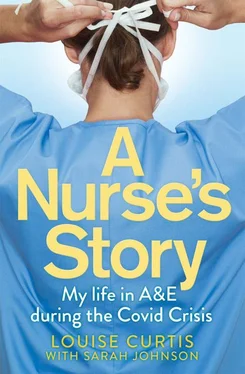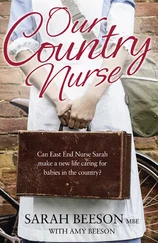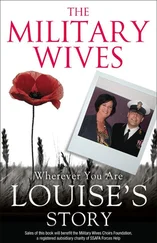One woman had been beaten with a cricket bat and in other cases women’s partners had tried to strangle and drown them as well as the kicking, hitting and punching. Two patients came in who were suicidal after months of verbal abuse and being told they were worthless. There were no refuge beds available because everything grinds to a halt over the weekend so they were all admitted into hospital and stayed until Monday. Many community services are also shut on Saturdays and Sundays with the majority of staff working Monday to Friday, 9 a.m. till 5 p.m., so it’s hard to discharge patients if they need additional help. For that reason, the emergency department is usually at its busiest on a Sunday and Monday because there has been no movement from the hospital to other services.
The mental health side of things on that shift really got me thinking. Some patients had been brought in after sending pictures of empty pill packets or apologetic messages to friends who had then called an ambulance. I’d seen a few of them so many times before. The only thing I could do in A&E was to monitor their physical health, but their actions were clearly a cry for help and they needed to be listened to and validated.
This contrasted to other people I’d seen throughout my career who were absolutely determined to end their life. Those attempts were incredibly violent and no one else was aware of what they had been planning. I was reminded of the teenage boy who had gone to school in the morning as normal and come home at lunch to end his life. It was only by chance that his mother, who had dropped by to pick something up that she had forgotten in her rush to go to work in the morning, found him collapsed in his bedroom. I was a junior nurse at the time and I can still remember his face. He didn’t make it. His mother was devastated and felt like she was responsible. She hadn’t realized he was struggling.
‘How did I not know this was happening?’ she asked one of my senior colleagues when they broke the news to her.
Another woman had come in during lockdown saying she was finding things difficult, but was deemed fit to be discharged. The next day she was reported missing and those of us in the department had a sneaking suspicion that she had ended her life. Some days later her body was found in the canal. She had always intended to kill herself and did not want to be saved. The news rocked us. I was so glad I wasn’t a specialist mental health professional. I do not envy them at all. Deciding whether to admit or discharge a patient on mental health grounds is the scariest type of responsibility in my view. So many patients will tell you, ‘If you let me go, I’m going to kill myself.’ Others are so withdrawn that they won’t say anything. Trying to work out whether they will take action and the level of risk is astoundingly difficult.
At this point, the hospital’s mental health services had started more face-to-face work but for a period they had to do the majority of their assessments over the phone. So much of making a decision is based on seeing the person in front of you, looking at their body language, seeing how well they are dressed, or whether they are underweight or overweight.
There was still a high number of mental health patients on my next shift. Some had turned up voluntarily, others were under section. The mental health team told me that if particular individuals tried to leave, then it was my responsibility to enforce a section. I felt completely out of my depth with all the different sections and what each one meant. There are so many and they tell you what level of restraint you can enforce and for how long. Everything is enshrined in law because depriving someone of their freedom is serious and you have to make sure you are doing the right thing. I hoped against hope that nobody would kick up a fuss.
Often, I find I can talk patients down when they are in crisis in the department, but sometimes we have to physically and chemically restrain them. There are guidelines and there is always someone very senior involved because, understandably, there’s a great deal of controversy around restraining patients and it needs to be done safely, otherwise people can die. It once took eight members of staff, myself included, to restrain one patient. He was off his face on drugs and was phenomenally strong. We had one person holding each lower leg, thigh, arm and his shoulders, and one to insert a cannula to mildly sedate him. It was dangerous, sweaty, hard work and we were doing it for the safety of the patient. He had no capacity to make decisions for himself and we were concerned that if he was left unsedated, he would fling himself off the trolley, hit his head or break his neck and kill himself in the process. That would come back on us as negligence because he was under our care.
It got to the end of my shift and all my patients with mental health problems had remained calm. I breathed a sigh of relief and went home to read up on all the sections that existed and their implications.
After all that reading, I still didn’t feel confident that I knew everything there was to know, so I was thankful I was working in minors the next day. There was little to no likelihood that I would be seeing any suicidal patients there. Nevertheless, it was a frustrating shift because I spent most of it on the phone to various specialities. We’d had several weeks at the height of the virus, where referring patients to other areas of the hospital was a dream because everyone was so obliging. That golden period had now ended. Theoretically, if we call a speciality from A&E, they are meant to take the patient. If they then think we’ve got it wrong, it’s up to them to transfer that patient to the correct speciality. That day, it wasn’t working like that.
‘I’ve got a patient who needs to be with you in the frailty department,’ I started. ‘Her respiratory rate is a little low, but…’
‘She needs to go to Respiratory,’ a voice barked back.
I rang Respiratory.
‘Hello, I’ve got a patient here for you. Frailty won’t take her because she’s got breathing problems.’
‘OK, what else?’
‘She’s got a fractured pelvis but I’ll tell you now that there’s nothing that needs to be done with it, she’ll just need painkillers and for it to be mobilized.’
‘Oh no, you need to check with Orthopaedics. Can you phone Orthopaedics to confirm, please? We can’t take her otherwise.’
I phoned Orthopaedics.
‘Yes, nothing to be done with that fractured pelvis. She’s fine to go to Respiratory.’
I rang Respiratory again.
‘Hello, it’s me with the patient who needs to come up to you. Orthopaedics are happy that they don’t need to see her.’
I felt like some kind of negotiator and that I was wasting time flipping between various hospital departments. It was annoying that this situation had suddenly got better for the peak of the pandemic before taking a turn for the worse. Perhaps they were stressed about the vast workload coming their way as more NHS services that had been put on hold resumed and were faced with huge backlogs.
Another department I called with alarming frequency that day was Urology. I was sure that they were fed up with me and I could imagine their hearts sinking when they heard it was A&E on the phone as it meant more work on top of their already crammed schedule. I called multiple times about a patient who couldn’t pee, another one who was pissing blood, someone who had a strange kidney disease which I’d probably never see or hear of again in my career, and last but not least, a man who had inserted three safety pins up his urethra.
‘He’s done what?’ said the urology registrar, perking up after obviously switching off when he first heard my voice.
Up until I saw this man, my day had mostly been filled with run-of-the-mill procedures. Almost everyone I had seen had complained of chest pain or that they didn’t feel very well. I had walked into this cubicle and started off with my customary greeting, ‘Hiya, my name’s Louise. What’s brought you into A&E today?’
Читать дальше












